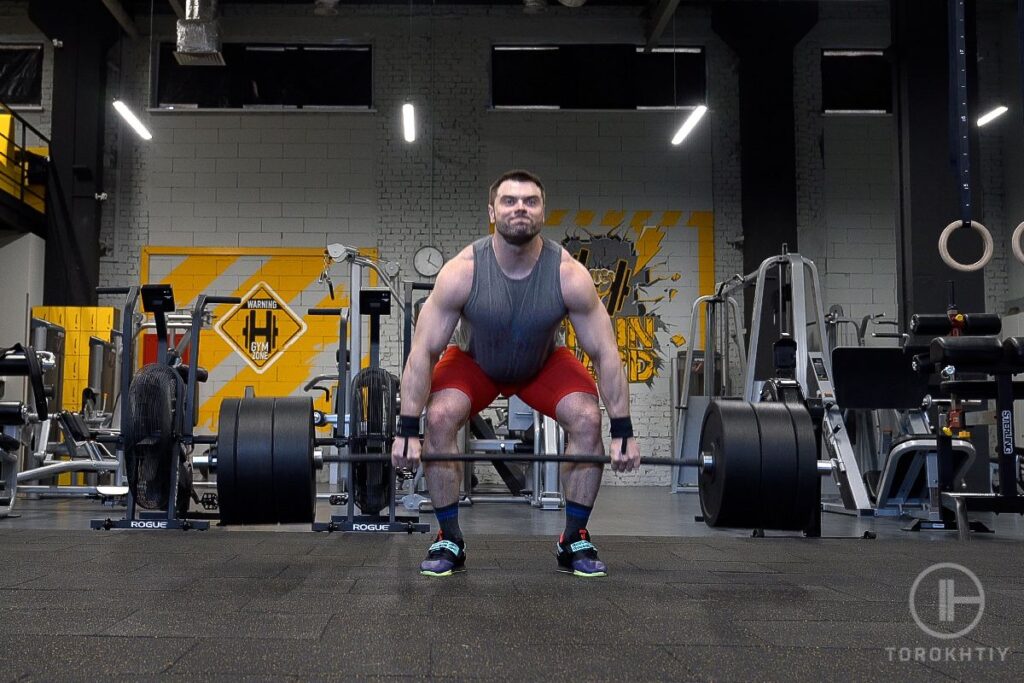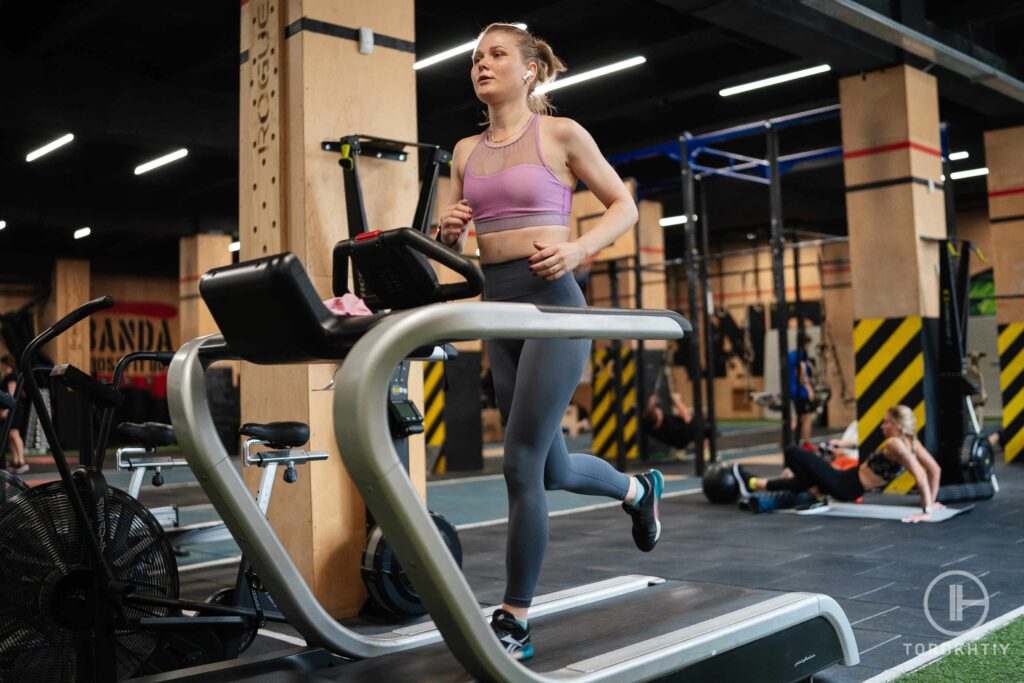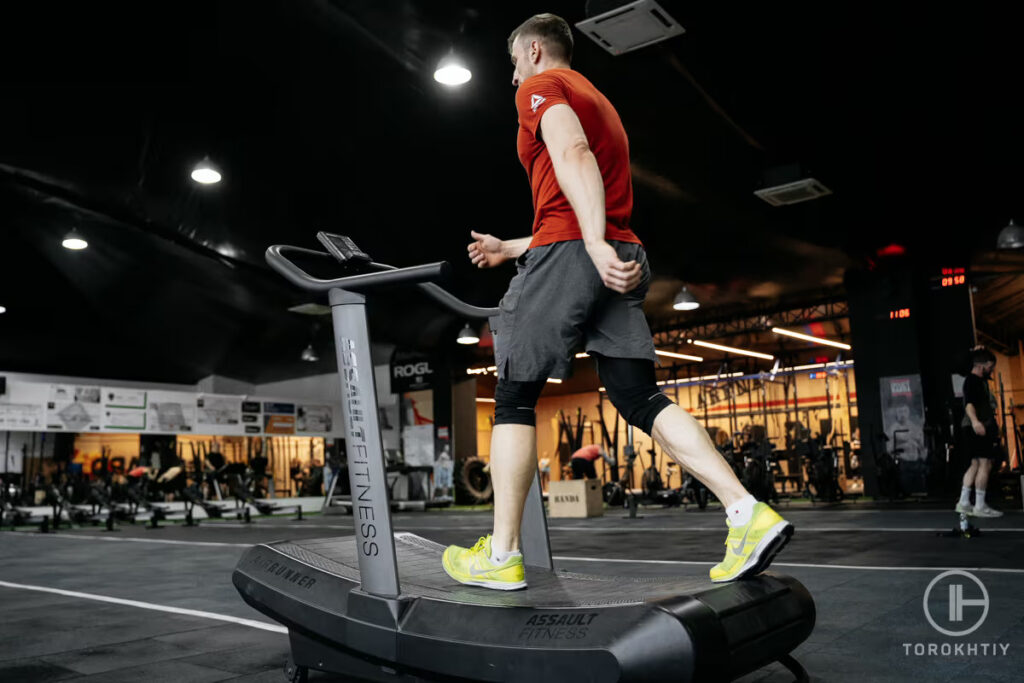How To Balance Running And Weightlifting?
Author:
Reviewed by:
(21 years of Oly Lifting experience)
Unlock your full potential by engaging with our experts and community! Have questions about your fitness journey or looking for expert advice on weightlifting techniques? Don’t hesitate — leave a comment below and Oleksandr Zagrebelnyi will provide a personalized answer and insights to help you reach your goals.
Torokhtiy is reader-supported. Some links are affiliate links, and we may earn a commission at no extra cost to you. See our disclosure page for details.
Running is an excellent cardio exercise, helping you to lose weight and improve fitness. Lifting is equally important to build strength.
That means you’ll want to know how to balance running and weightlifting. The good news is that it’s possible. We’ll take you through the benefits and best approaches.
How To Balance Running And Weightlifting: Is It A Good Idea? The short answer is yes. It’s a great idea and can be very beneficial. All you need is the right approach and to know how to balance running and weightlifting with a workable schedule.

Is It Possible To Balance Running And Lifting (general answer)
Scientific studies show that running is effective at reducing body mass. It’s also an effective way to reduce your risk of death from cardiovascular issues.
On the other hand, lifting is excellent at improving your body image and subsequently your confidence. It’s also essential as you age.
Studies show that you lose between 30% and 50% of your muscle mass between the ages of 40 and 80 years old. Lifting doesn’t stop the aging process but it does rebuild your muscles. You can make them as strong as when you were 20, or stronger.
It’s not just possible to balance running and weightlifting, it’s something everyone should be doing.
Forget what you’ve heard, that running eats muscle or lifting weights makes you too bulky to, run. Neither is true, you just need to find the right balance to reap rewards from lifting and running.
3 Benefits Of Running When Lifting Weights
Given the choice between running and weight training, you’d probably prefer to hit the gym and push your rep limit or hit a new personal lifting record.
However, you should be combining running and strength training. It provides the following benefits.
✅ Better Endurance
Running, even short distances, requires a sustained burst of energy. In short, you’ll respiratory and cardiovascular systems will work harder on a run than it will lifting weights.
You’ll also need to concentrate on your breathing which will improve the amount of oxygen your body, specifically your muscles, absorb.
Your exercise endurance level will increase and this will help you when lifting weights, you’ll be able to get a few extra reps in. Studies show that better endurance will increase muscle hypertrophy.
✅ Improved Strength
Combining strength training and running means you’re endurance will improve and you’ll grind out those extra reps.
That increases the microscopic tears in your muscles which make your muscles stronger when they heal.
In short, running will help you lift more and gain strength faster.

✅ Increased Mental Stamina
Running is tough work, even if you enjoy it. It’s not just grinding out mile after mile, even when you want to turn back. It can be challenging simply to lace up your running shoes and hit the streets two or three times a week.
Most runners develop mental stamina by forcing themselves to create a running routine and by pushing that extra mile.
This mentality will transfer to your weights session. It will help you be mentally prepared and keep going, regardless of how many reps you’re aiming for.
3 Benefits Of Lifting Weights When Running
Before any runners reading this rush to tell their lifting friends that they were right, that running is better for you. The truth is, that lifting and running are both beneficial.
Here are the benefits of lifting weights to improve your runs
✅ Better Efficiency
Whether you run a few miles daily or are training for a marathon, the only way to successfully complete the distance is to maintain good technique. This fact is backed by scientific research.
Lifting weights requires you to start light and focus on form. You can’t waste energy as you increase the weight.
Focusing on form makes your body move efficiently. It will then apply these efficiencies to your running. That means you’ll run smoother and be able to go for longer.
It’s particularly beneficial if you focus on lower-body strength training.
Follow us!

Free!
Get a 2-week Weightlifting Program as a bonus for the subscription to kickstart your training plan!

Free!
✅ You’ll Run Further
The best reason to create a running and weightlifting schedule is that building muscle will help you run further and/or faster, depending on what type of running you’re doing.
Your muscles will be better able to manage distance as they are accustomed to storing energy and ensuring it’s there when you need it.
Equally, explosive strength training is very effective at boosting muscle strength, which can increase the speed at which you start and complete shorter distances.
✅ Lower Risk Of Injury
Injuries can happen in any sport. However, the stronger your muscles, tendons, and ligaments are, specifically around joints, the lower the likelihood of an injury.
Lifting weights will help build the strength you need to avoid injury.

How To Balance Running And Lifting?
The big question is how to balance running and lifting. Here are several tips that can help you develop the perfect schedule. Just remember, as with any training, listen to your body.
1. Know Your Goal
Running and strength training go well together. However, when deciding whether you should be running and lifting same day or not, consider your goal.
Doing two lots of exercise means you’ll be tired for the second one.
Therefore, if your goal is lifting heavier, lift first, and run later. It makes the run more challenging and pushes your endurance levels while ensuring you have lifted as heavy as possible.
If your goal is to be a better runner, run first, focus on form and distance, and then lift afterwards. You won’t be able to lift as heavy but you will keep improving your form.
2. Separate Your Training By 3-6 Hours
To get the best results from running and weight training on the same day, try to separate the two exercise sessions by between 3-6 hours. It will help your body recover from one exercise and maximize your effort for both sessions.
A good option, if possible, is to do your first session early in the morning. You can then do the other one at lunchtime or any time later in the day.
3. Start By Walking
If you’re a lifter and you want to incorporate running into weight training then start small. After all, if you were just starting lifting weights you would start with a light load!
Instead of running on a weights day, and increasing your chance of injury, start by walking 30-60 minutes. It’s still best to do your lifting early and walk later in the day.
This will help build your cardiovascular fitness and prepare you for short runs.
4. Assess Regularly
Adding weight lifting or running to your existing schedule means starting with slow runs (or walks), or lifting light.
That’s important for form. But, if you want to maximize your gains, you’ll need to evaluate your progress and change your training regularly. Tweak your routine to constantly push your limits.
This will ensure your body is continually challenged and help you reach the results you seek.

Scheduling Your Running And Weightlifting Workouts
If you’re looking for details on how to balance running and lifting or incorporate running into weight training, then the following schedules may be useful.
Running Orientated:
| Monday | Tuesday | Wednesday | Thursday | Friday | Saturday | Sunday |
|---|---|---|---|---|---|---|
| Easy run | Lifting focused on the upper body | Easy run | Sprint training | Easy run | Long run | Rest day |
| Lifting focused on the lower body | Full body lifting |
Lifting Orientated:
| Monday | Tuesday | Wednesday | Thursday | Friday | Saturday | Sunday |
|---|---|---|---|---|---|---|
| Lifting focused on the back and biceps | Lifting focused on the chest and triceps | Rest day | Lifting focused on the lower body | Lifting focused on shoulders and traps | Rest day | Longer run |
| Easy run | Easy run |
Of course, the timing of each workout is flexible, as are the allocated days. You can adjust it to suit your working week.
Save it for easy access!
Bookmark this page now to access the program and instructional videos anytime, anywhere.
Stop wasting time searching during your gym sessions.
4 Possible Side Effects Of Combining Running And Lifting
Can you run and lift weights? Yes. However, there are side effects and common mistakes you should be aware of.
1. Failing To Plan
One of the biggest mistakes runners and weight lifters can make is failing to have a plan. You need this before you hit the weights or lace up your running shoes.
For weights, you need to know what exercises you’re doing. In general, runners doing weights should target hips, joints, and core running muscles. Of course, they should also do some work on their biceps, triceps, and other major muscles.
In contrast, lifters looking to start running should be planning a route, deciding on the distance, and focusing on breathing not pace. The aim is to keep your heart rate in the aerobic zone.

2. Overdoing It
Another common issue is trying to do too much too soon. Many weightlifters feel fit because they can lift extremely heavy weights. However, that doesn’t mean they have good levels of cardio fitness.
If you’re adding lifting as a runner running as a lifter, start light and build it up. Remember to concentrate on form first.
3. Not Pushing Yourself
It’s easy to think of your secondary exercise as just that, secondary. However, that means you’ll put less effort in because you feel like your workout has already been completed.
Regardless of whether you’re lifting as a runner or vice versa, you need to commit everything you have to each session. That’s how you’ll see the best gains.
4. Forgetting To Re-evaluate Your Diet
As a weightlifter, your focus will be on maintaining and increasing body mass. Dedicated runners tend to have the opposite goal in mind.
Regardless of your intent, if you’re adding weightlifting or running to your schedule, you need to, reevaluate your diet.
Running burns a lot more calories than weightlifting. To maintain your muscle mass you will probably need to up your calorie intake. If you’re a runner and you’re adding lifting, you may not need to change your diet much. But, it’s still important to consider your calorie and protein intake.
FAQ
Is It Okay to Run and Lift on the Same Day?
Yes. In most cases, this is the better approach as you can schedule a rest day and let your body fully recover. Just remember to leave 3-6 hours between exercise sessions.
Is It Ok to Lift After Running?
Lifting after running means you’re focusing on more efficient running as opposed to strength gains. If that’s your aim then this is the right approach.
However, you should still leave between 3-6 hours between your run and your lifting session. This will help to ensure your lifting capabilities are maximized.
Should I Run or Lift First?
If you’ve decided to do both on the same day then you need to decide whether your priority is gaining mass or improving running form.
Whichever one you prioritize is the one you should do first.
Can I Run the Day After Weightlifting?
Yes. However, it can take 24 hours for your body to fully recover from an intensive lifting or running session. If you’re running the day after weightlifting, make sure the lifting session wasn’t intense or that you just do an easy run.
Do I Have to Run and Lift Weights on the Same Day?
No, you simply need to consider which schedule suits you best. You can alternate days lifting and running. But, remember that heavy lifting will make your runs harder for up to 24 hours after.
Conclusion
The above tips should help you balance running and weightlifting successfully and still see meaningful gains.
The great thing about lifting and running is you need very little to get started. Grab some running shoes and basic weightlifting equipment today and start your journey to the new you!
Also read:
- Running Before Or After Lifting: Which Is Best?
- 4 Benefits Of Weightlifting For Seniors + 8 Simple Exercises
- 12 Cardio Alternatives To Running For A Full-Body Workout
- Running And Bodybuilding: 5 Benefits + A 7-Day Training Plan
- Strength Training for Runners (Detailed Program)
References:
- Hespanhol Junior, L. C., Pillay, J. D., & Verhagen, E. (2015). Meta-Analyses of the Effects of Habitual Running on Indices of Health in Physically Inactive Adults. Sports Medicine (Auckland, N.z.), 45(10), 1455-1468. https://doi.org/10.1007/s40279-015-0359-y
- Pate, R. R., Lavie, C. J., Sui, X., Church, T. S., & Blair, S. N. (2014). Leisure-Time Running Reduces All-Cause and Cardiovascular Mortality Risk. Journal of the American College of Cardiology, 64(5), 472. https://doi.org/10.1016/j.jacc.2014.04.058
- IKEZOE, T. (2020). Age-Related Change in Muscle Characteristics and Resistance Training for Older Adults. Physical Therapy Research, 23(2), 99-105. https://doi.org/10.1298/ptr.R0009
- Hughes, D. C., Ellefsen, S., & Baar, K. (2018). Adaptations to Endurance and Strength Training. Cold Spring Harbor Perspectives in Medicine, 8(6). https://doi.org/10.1101/cshperspect.a029769
- Folland JP, Allen SJ, Black MI, Handsaker JC, Forrester SE. Running Technique is an Important Component of Running Economy and Performance. Med Sci Sports Exerc. 2017 Jul;49(7):1412-1423. doi: 10.1249/MSS.0000000000001245. PMID: 28263283; PMCID: PMC5473370.
Why Trust Us?
With over 20 years in Olympic weightlifting, strength training, nutrition coaching, and general fitness our team does its best to provide the audience with ultimate support and meet the needs and requirements of advanced athletes and professional lifters, as well as people who strive to open new opportunities and develop their physical capabilities with us.
By trusting the recommendations of our certified experts in coaching, nutrition, and sports training programming, as well as scientific consultants, and physiotherapists, we provide you with thorough, well-considered, and scientifically proven content. All the information given in the articles concerning workout programming, separate exercises, and athletic performance, in general, is based on verified data.
The product testing process is described in more detail here.
Oleksandr is a running coach and member of the Nike Run Club coaching team for 8 years. A participant in national and international competitions at distances from one kilometer to the ultra trail. Owner of mountain trail running camps. Nowadays Oleksandr is responsible for creating running training programs for athletes of various levels, coaching personally offline and online, conducts trail running camps in the mountains, participates in competitions.
Reviewed by: Oleksiy Torokhtiy
Olympic Weightlifting Champion, PhD in Sport Science
Best Results: Snatch – 200 kg,
C&J – 240 kg
Oleksiy Torokhtiy is a professional athlete boasting 20 years of experience in Olympic weightlifting. With multiple European and World titles under his belt, he has showcased his prowess in two Olympic Games (Beijing 2008 and London 2012). Upon concluding his illustrious career, Oleksiy dedicated himself to coaching. By 2022, he had conducted over 200 weightlifting seminars worldwide. He is the visionary behind an international sportswear and accessories brand known for its motto, “Warm Body Cold Mind.” Additionally, he is an esteemed author and the creator of a series of training programs and eBooks.





Still have questions after reading our article? Unlock your full potential by engaging with our experts and community! Don’t hesitate — leave a comment below and Oleksandr Zagrebelnyi will provide a personalized answer and insights to help you reach your goals.